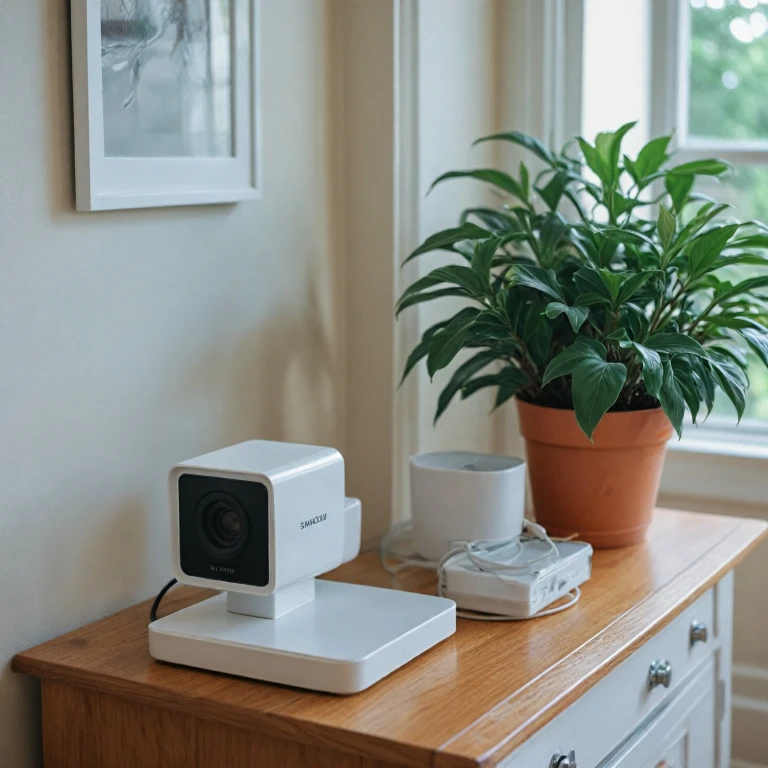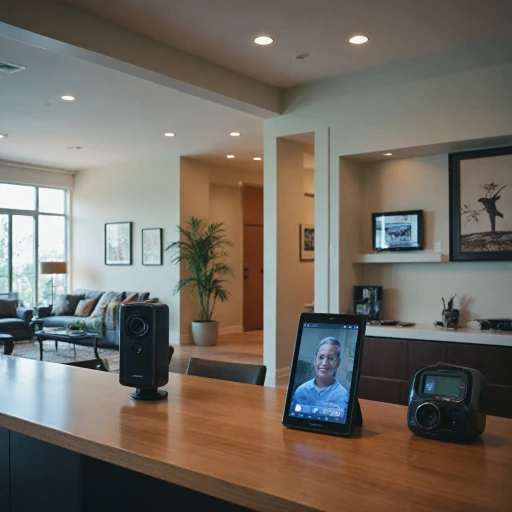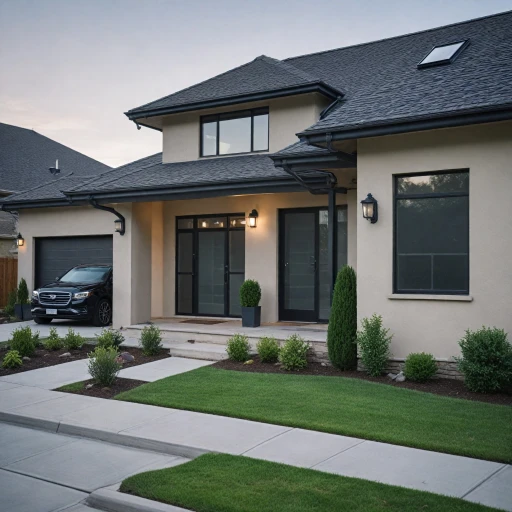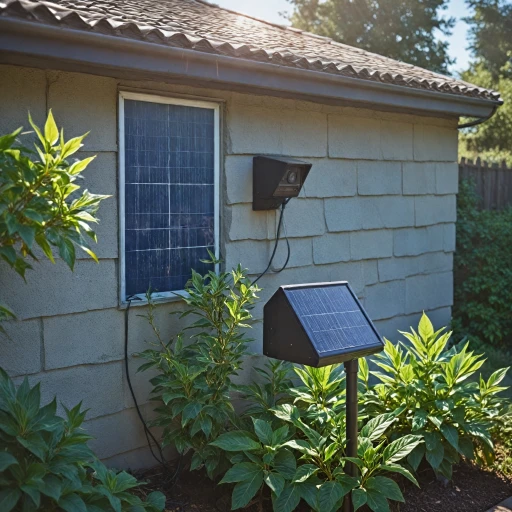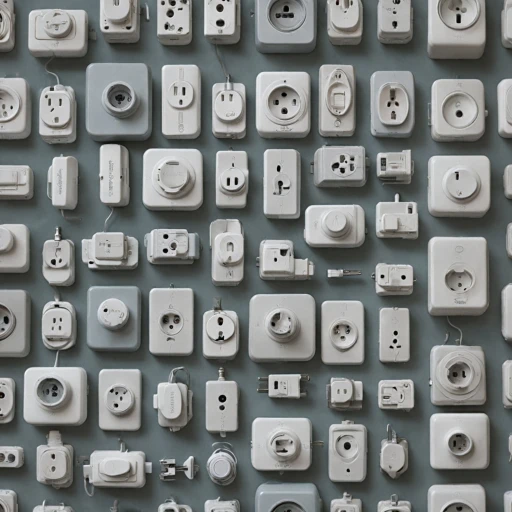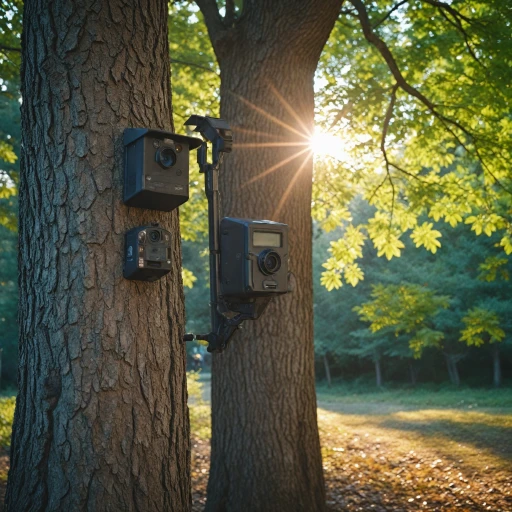The Basics of DC Power Adapters
Understanding the Essentials of DC Power Adapters
When delving into the world of home security cameras, one cannot overlook the significance of DC power adapters. These small yet essential devices play a crucial role in ensuring your security system operates smoothly. The primary function of a DC power adapter is to convert the AC power from your outlet into the DC power required by most security cameras. Without a suitable power adapter, getting the correct current, voltage, and power supply for your device can become a challenging task. Not all adapters are created equal. They come in a variety of output voltages and currents, and choosing the wrong one might harm your equipment or reduce its efficiency. For instance, USB power adapters may seem convenient due to their universal appeal, but they may not always offer the output voltage or current your camera needs. Let’s talk about connectors. You'll find them in various shapes and sizes, from male to center positive connectors. The type of connector plays an integral role in ensuring a secure and reliable power connection. It can be somewhat overwhelming to compare your options, but knowing what is available can help avoid unnecessary headaches later. Moreover, stock availability of certain adapters can vary, especially with the rising demand for enhanced security solutions. Understanding the basics will assist you in making informed decisions about whether to opt for a low-cost plug adapter or to invest in high-quality switching power supplies. Price remains another important factor, as these adapters can range from budget-friendly options to premium varieties. An investment in a reliable power adapter ensures longevity and effectiveness, preventing power-related issues down the line. With future technological advances, it’s possible to integrate more sustainable energy options into your home security systems. Solar charging, for instance, is emerging as a viable alternative. Curious about this green energy solution? Learn more about how a solar charger can power your home security camera battery.Why DC Power Adapters Matter for Security Cameras
The Vital Role of DC Power Adapters in Home Security Systems
The use of a DC power adapter in your home security camera setup is pivotal. That's not just because it provides the necessary power to function, but also because it greatly affects the overall reliability and performance of your security system. Understanding its importance means delving into how it contributes to your camera's effectiveness. Most security cameras come equipped with a power supply that plugs into a standard wall outlet. This type of power adapter usually includes a conversion mechanism, transforming AC power from the outlet to the DC power your camera requires. This transformation accommodates the specific voltage and current demands of different security cameras, ensuring they operate efficiently. When comparing various power adapters, it's important to consider the output voltage and current. These factors determine if your camera will receive the correct amount of charge it needs. Mismatched specifications can lead to either underperformance or potential damage to your equipment. Thus, knowing the adapter output and matching it with your device's requirements is crucial. The market offers a range of adapters, from usb power options to more traditional plug adapters. Each type comes with its respective availability, price, and ease of use. For instance, a wall charger or switching power supply might be more suitable if a stable, continuous power source is available, while a usb power connector could serve well for more flexible setups. By comparing series and stock models, you can select the right combination of power adapters to optimize your security system's performance. Moreover, a power supply with a center positive or male voltage connector often supports a wider array of devices, boosting compatibility. Ultimately, selecting the right DC power adapter not only adds to the camera’s longevity but also ensures its consistent functionality. As power technology progresses, newer solutions will likely offer even more efficiency and adaptability. However, for now, focusing on the right power supply means safeguarding your home security investment.Choosing the Right DC Power Adapter for Your Camera
Factors to Consider When Selecting the Right Power Adapter
Choosing the appropriate DC power adapter for a security camera can make a significant difference in performance and longevity. To ensure your camera runs smoothly, consider the following key factors when selecting a power adapter:- Voltage and Current Requirements: Every security camera has specific voltage and current needs. Ensure the power adapter's output voltage aligns with your camera's requirements. Mismatched voltage can lead to malfunction or damage. Also, the adapter's charging current should meet or exceed the camera's current needs to provide stable power and prevent overheating.
- Power Output: Consider the power output of available adapters to ensure they match your device's needs. Typically, higher output is better for devices requiring more energy. Compare power charges from multiple suppliers and stock models to determine a suitable match.
- Connector Type: The connector plays a vital role in compatibility. Most security cameras use a male connector, usually center positive, which ensures optimal connection security. Double-check the adapter plug type to avoid any compatibility issues.
- Quality and Brand: Opt for well-reputed brands known for reliable power supplies. While price is a consideration, selecting quality adapters reduces risks like power surges and short circuits.
- Additional Features: Some power adapters come with features like USB charging capability or replaceable cables, which can add value and convenience. Look for adapters that include a sufficient cord length for flexible placement of your security camera.
Installation Tips for DC Power Adapters
Seamless Setup and Maintenance for Your Installation
For those planning to set up their home security cameras, getting the installation of DC power adapters right is critical. It’s not just about plugging them in, but ensuring they work harmoniously with your camera system. First, identify the appropriate power supply. This typically involves matching the requirements of your camera, such as output voltage and current. Always verify these specifications against the adapter labels to prevent underpowering or overloading. When installing, choose the correct plug adapter to fit your power input. A secure connection ensures the system functions without interruptions. Consider if you need a male or female power connector, as mismatches can lead to compatibility issues. It’s just as important to think about positioning the power sources. Strategically place your wall charger near your camera to minimize unnecessary cable lengths. This helps avoid clutter and reduces the risk of tripping. Longer cables can also lead to voltage drops, which could affect performance. Using power adapters with a power cord allows flexibility in placing your cameras in optimal positions without being tethered to power outlets. If your setup demands this, compare various adapters’ capabilities to ensure they meet your specific needs. Last but not least, consider the environment your camera will be in. If it's outdoors, ensure your adapters and connectors are weatherproof. For indoor setups, maintain easy access to power outlets for switching power supplies without much hassle.Troubleshooting Common Issues with DC Power Adapters
Troubleshooting Power Adapter Issues
When working with home security cameras, encountering issues with DC power adapters is not uncommon. Proper troubleshooting can save you time and ensure your camera performs optimally. Firstly, if your security camera isn’t powering up, check the power supply itself. Ensure the plug adapter is firmly inserted into a working outlet and that the adapter plug is correctly connected to the camera’s power connector. A faulty power cord or loose connection can disrupt the current flow, preventing the camera from turning on. Next, verify that the adapter output voltage matches the camera’s requirements. An incorrect voltage or amperage can cause malfunction. It's advisable to compare the adapter's specifications with those provided by the manufacturer. For instance, a common issue involves mismatched output voltage, where a power adapter may deliver more (or less) power than what's required. Sometimes, adapters may not fit properly due to variations in connectors. Ensure that the male connector from the power adapter fits snugly into the female input of the camera. Adapters come in a series of different connector sizes, so using the correct one is crucial. If you’ve ruled out these issues, consider testing the adapter on another device. A working adapter should function with any compatible device, serving as a useful check if there's ambiguity regarding its performance. Finally, examine the adapter for any visible signs of damage, such as frayed cables or burnt marks. A cautious approach is essential; using a damaged adapter can pose a risk. If damage is present, replacement becomes necessary. It’s wise to keep stock of backup adapters, as this can mitigate potential downtime. In conclusion, maintaining a list of common troubleshooting steps and having spare adapters can be a wise investment in ensuring your home security camera remains reliably powered at all times.Future Trends in Power Solutions for Security Cameras
Emerging Power Supply Innovations in Security Cameras
As technology evolves, so do the solutions we use to power our home security cameras. A notable trend is the shift towards more energy-efficient and sustainable options. Traditional DC power adapters are now competing with USB power options and the use of solar and battery-powered alternatives.
One key advancement is the development of smart adapters that can automatically adjust the output voltage and current to match the needs of the connected devices. These series of intelligent power adapters not only improve efficiency but also enhance the longevity of the cameras.
Wireless charging is another area seeing rapid advancement. As more devices support wireless capabilities, the integration of wireless charging pads in home security systems is becoming more feasible, eliminating the clutter of cables.
The use of universal plug and adapter systems continues to gain popularity, reducing the need for multiple power supplies. These systems often include features like built-in USB ports and center positive connectors, streamlining the process of powering various devices in your home.
Furthermore, increased demand for eco-friendly solutions has led to a variety of black and white power supplies that reduce energy consumption without sacrificing reliability. Integrating such power adapters into your security camera setup not only reduces environmental impact but can also cut down on electricity costs.
Lastly, companies are investing in more robust power supply units with enhanced protection against power surges and water damage. The reliability offered by switching power supplies that provide stable adapter output under varying conditions is a priority.
